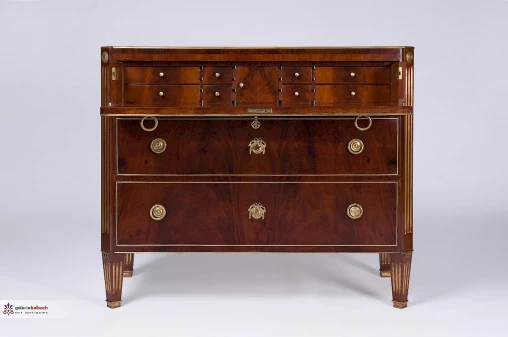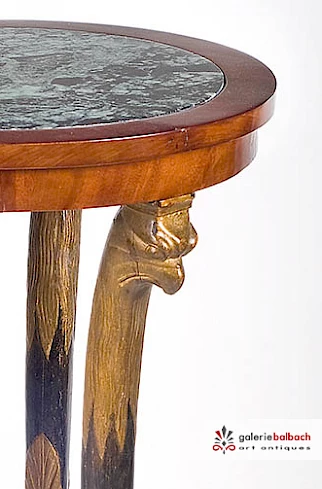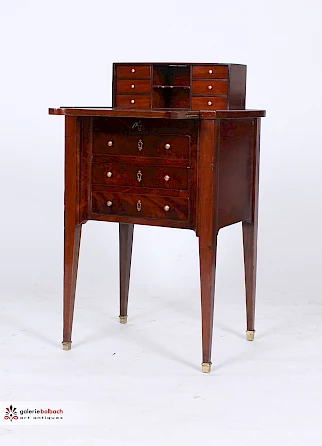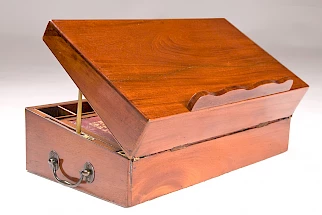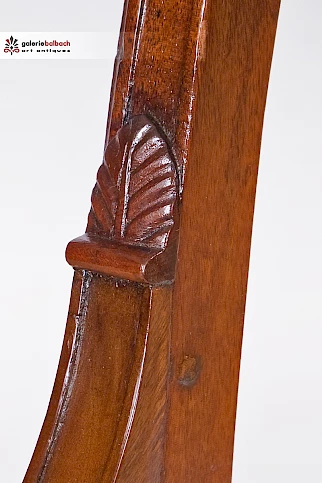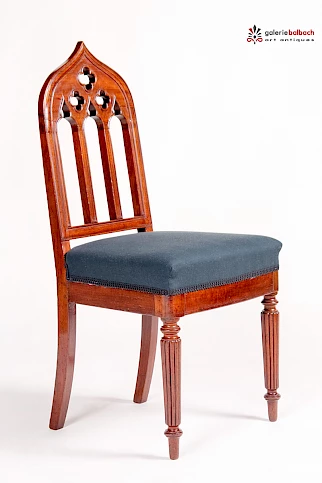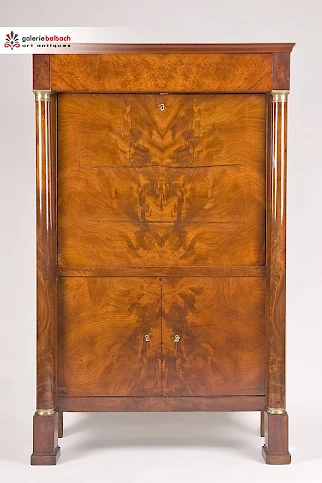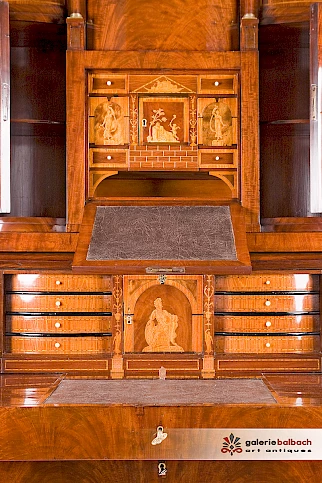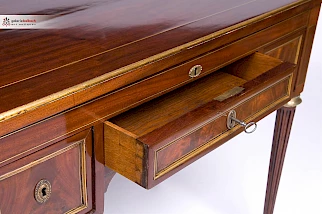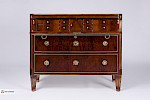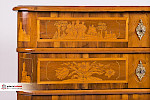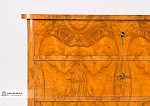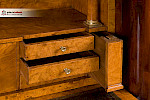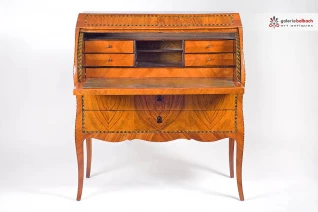Mahogany
Botanical name: Swientia macrophylla, Entandophragma cylindricum a.o.
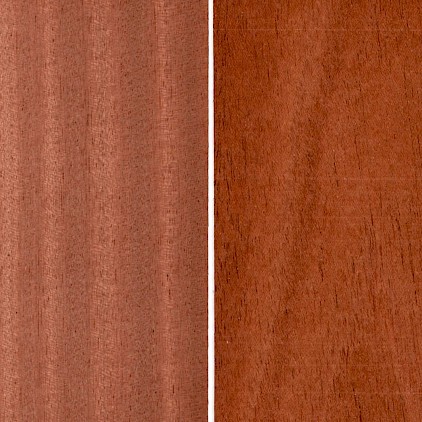 Mahogany has always been a popular wood for furniture making. The first mahogany woods were brought to Europe from the West Indies about 450 years ago. Woods from distant countries were expensive and so they were only used for the very finest furniture.
Mahogany has always been a popular wood for furniture making. The first mahogany woods were brought to Europe from the West Indies about 450 years ago. Woods from distant countries were expensive and so they were only used for the very finest furniture.
Antique furniture made of mahogany
During the Baroque period, mahogany wood experienced an absolute heyday and was particularly popular at the French court and in England, where Chippendale, Hepplewhite and Sheraton used the wood for their furniture.
In antique furniture of the Biedermeier and Empire periods, the much darker cubamahogany was used. It was used as a veneer and was also called pyramid mahogany because of its distinctive grain, which shows a tapering texture.
Mahogany has always been considered a very noble wood. This impression was reinforced in the Empire when the wood was combined with gilded bronzes.
Is there also light mahogany wood?
As there are many different types of mahogany, there are also many different colour variations. Mahogany ranges from light reddish to very dark brown. In its untreated state, mahogany is more likely to be found in the brownish shade. The dark colour that we know from antique furniture often only really comes out through the shellac.
Even today, mahogany is used for precious furniture and furnishings, for example in yachts and ships' interiors.
The mahogany wood used in the period of origin of our antiques came from India, Africa and Central and South America.
The square picture shows the African Sapelli mahogany on the left and the American Cuban mahogany on the right.
Also interesting

Pitched roof
The Schinkel roof or Schinkel gable is the triangular gable that we often find as the upper end of Biedermeier [...]Read more
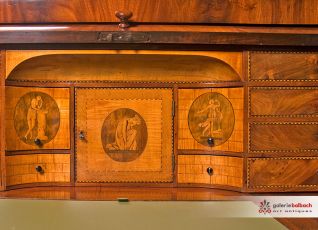
Masonry marquetry
Masonry marquetry is the term we use to describe marquetry in the form of bricked stones. [...]Read more
